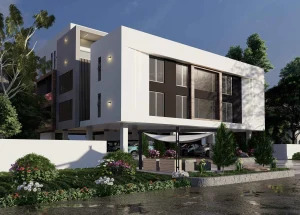Architectural Sketching and Its Importance in the Design Process
Architectural sketching plays a crucial role in the design process for several reasons:
Visualization: Sketching allows architects to visually explore their ideas and concepts quickly. It’s a way to translate abstract thoughts into tangible images, helping designers understand the spatial relationships and aesthetics of a project.
Communication: Sketches serve as a universal language among architects, enabling them to communicate ideas with clients, team members, and stakeholders effectively. They can convey design intent, layout options, and details in a way that words or digital models alone often can’t.
Creativity and Brainstorming: Sketching encourages creativity and brainstorming. It’s a flexible, low- pressure medium that promotes free thinking and experimentation. Architects can sketch multiple variations of a design quickly, allowing them to explore different possibilities.
Problem Solving: Architectural sketching helps identify and solve design problems early in the process. Designers can spot issues with proportions, circulation, or functionality through sketches and make necessary adjustments before moving on to more detailed plans.
Client Engagement: Clients often find hand-drawn sketches more engaging and relatable than
computer-generated renderings or technical drawings. Sketches can help clients better envision the final project and become more actively involved in the design process.
Historical Context: Sketching is deeply rooted in architectural history, and many iconic buildings and designs started as sketches. It’s a tradition that connects modern architects with their predecessors and helps preserve a sense of heritage in the field.
Quick Iteration: Sketching is rapid and flexible. Architects can sketch on paper or digitally, allowing for easy corrections and iterations. This speed is particularly useful during the initial phases of a project when ideas are still evolving.
Record Keeping: Sketches serve as a valuable record of the design process. They document the evolution of an idea, which can be useful for reference, documentation, or even legal purposes.
In conclusion, architectural sketching is a versatile and indispensable tool in the design process. It aids in idea generation, communication, problem-solving, and client engagement while preserving a link to architectural traditions and providing a practical means of documenting the design journey.




